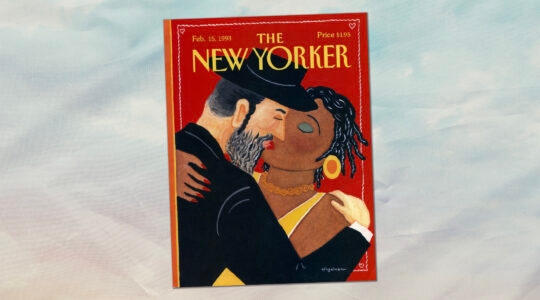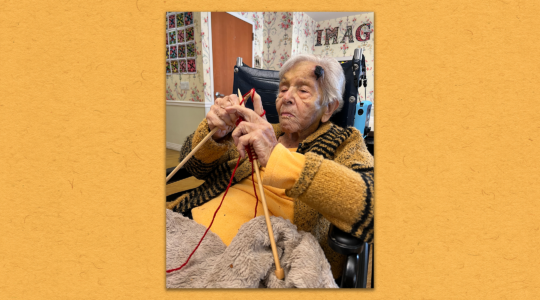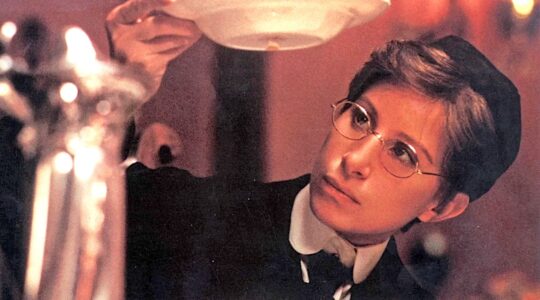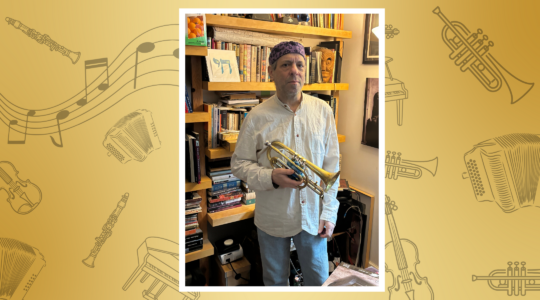Rarely, if ever, does one find a traditional egalitarian Shabbat service, a traditional Orthodox service, a Reform service and a partnership minyan operating side by side in the same building on a Saturday morning.
Yet this is why participants come back to Limmud NY, a pluralistic learning conference that brings together Jews from across the denominational — and post-denominational — spectrum. It’s part of an international movement, founded in England four decades ago, that welcomes anyone interested in Jewish learning, and is known for its high degree of volunteerism. Limmud NY, now in its 13th year, was held at a new location in Princeton, N.J., and buzzed with more than 750 participants last Sunday.
Jenn Queen, 29, a third-year rabbinical student at HUC-JIR, the premier Reform rabbinical seminary, said she enjoyed leaving her “Reform bubble to interact with other folks and ideas.” As a first-time attendee, she was impressed with the “care and consideration” that went into making “this space as inclusive as possible,” adding: “This is a place where the average Reform Jew would feel comfortable.”
Indeed, in achieving greater diversity, the conference welcomed its largest-ever group of Reform Jews, with a delegation of 26 members from Central Synagogue, the 2,300-family Reform synagogue in midtown Manhattan. And for the first time, the conference had a Reform Shabbat morning service. Previously, service options included egalitarian and mixed seating services, but never a specifically Reform service, according to a conference organizer.
Ben Greenberg, director of adult engagement at Central Synagogue and largely responsible for recruiting from the temple for the conference, said participants were treated warmly and “did not feel embarrassed to take out a phone on Shabbat because they felt their practice was viewed as equally valuable and authentic.”
The largest-ever presence of LGBTQ Jews participated this year, and sessions on the topic were represented in nearly every time slot throughout the conference, including several that focused on the experience of transgender Jews.
Miryam Kabakov, founder and executive director of Eshel, a nonprofit organization that promotes inclusion for Orthodox LGBTQ Jews and their families, said the organization has made a concerted effort to “Queer-ify Limmud.” The organization sponsored 10 members to attend. “Queer people need an address here,” she said.
The presence of LGBTQ Jews was evident from signs on bathroom doors indicating that the several facilities were gender-neutral. Abby Stein, a transgender Jew who left the chasidic community, presented seven times at the conference — more than any other presenter.
“Be the change you want to see,” she said.
Classes at the conference ran the gamut, from a session that compared the story of Moses to other mythological heroes, to a family yoga class, to a search for the best kosher chocolate.
A workshop led by spoken word poet Andrew Lustig encouraged participants to pen thoughts on their complex relationships with Israel and Jewish identity. Blogger and writer Elad Nehorai gave a session challenging participants to tap into their creative selves through fear, telling participants “you are what you fear.”
Limmud NY President Penny Arons said a major effort was made to be inclusive and to provide a safe space allowing for difficult topics to be discussed. Those included intermarriage, the experiences of Jews who left Orthodoxy, acceptance of LGBTQ Jews and a shifting definition of Zionism. She noted that for the first time, the dozens of sessions were organized by six “essential questions,” ranging from the role of history and memory in Jewish life to what a diverse, 21st-century Jewish community should look like.
Given that many people who attend Limmud NY are seeking to expand their own religious experience, some choose to explore a Shabbat service different from what they are used to at home. That may have accounted for the fact that the more liberal “partnership” mechitza minyan, where women have a role in leading parts of the service, drew 85 people on Shabbat morning while the traditional Orthodox minyan had about 30 men and women.
Isaiah Rothstein, an Orthodox rabbi and Jew of color who attended the traditional service, observed that he could “count members of the Orthodox establishment here on one hand.”
For some, the lack of a significant centrist Orthodox representation at the conference was refreshing. “The mainstream Orthodox community seems to be occupying its time with shutting people out,” said a woman who described herself as “halachic egalitarian.” She was referring specifically to the recent Orthodox Union statement barring women from the Orthodox rabbinate. “Why should we invite them into a space like this if they’ve decided, time and again, to reject inclusivity?”
It should be noted, though, that all Jews are welcome at Limmud NY, but not surprisingly those who are more rigid about their beliefs — religious or political — tend to stay away.
Doreen Seidler-Feller, a clinical professor of psychiatry at UCLA and a presenter at the conference, described inclusivity as a “sacred cow” for Limmud NY participants.
“People who have brittle positions on the left or on the right don’t want to be under someone else’s banner,” she said. “Their mentality is one’s own banner, or no banner.” She noted the absence of groups from the political left as well as the religious right.
One chasid from Borough Park came for the day on Sunday but quickly backtracked on his offer to be quoted in this article after he found out that several panels featured those who left the ultra-Orthodox community and now assail its way of life.
Dressed in traditional chasidic garb — a long black coat, curly payes and a black hat — he stood out in a crowd that featured colorful kippot on female and male heads.
“I thought this was just about learning Torah, but that is not the case,” he said, asking not to be named so as not to hurt his reputation at home.
Gabi Weinberg, 26, a rabbinical student at RIETS, Yeshiva University’s rabbinical seminary, suggested Limmud participation requires “a triad — pluralism, community and halacha, and you can’t have all three,” he said, noting that the actual religious services at the conference are “not pluralistic, for a reason.”
“We celebrate diversity while letting people be who they are,” he said. “There’s a difference between ‘I accept what you do’ and ‘I accept who you are.’”
At Limmud NY, they’re striving for the latter. “The difference is subtle, but important,” said Weinberg, a member of the conference steering committee. “We want real diversity here. That means people remaining distinct, and not compromising on their essential principles, but still sitting next to someone new and different at a Shabbat lunch.”
Elli Cohn, 25, a Conservative rabbinical student and one of the clergy interns at the Columbia/Barnard Hillel, said she is a pluralist, up to a point.
“I believe in a pluralism of substance,” she said, which requires agreement “on the big things.” She would be opposed to having sessions taught by someone who doesn’t view women as ritual equals, for example. It would “just create opportunities for alienation in both directions,” she said.
“I would happily eat a meal with someone who won’t count me in a minyan,” she said, “but I won’t participate in a minyan where I don’t count.”
The New York Jewish Week brings you the stories behind the headlines, keeping you connected to Jewish life in New York. Help sustain the reporting you trust by donating today.




